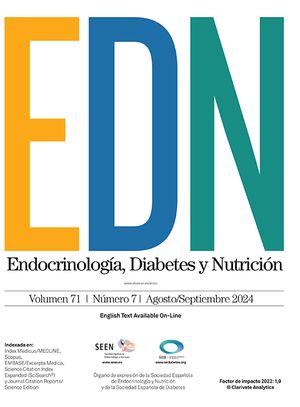Las neoplasias endocrinas múltiples (MEN) son síndromes de herencia autosómica dominante caracterizados por la asociación de lesiones en distintas glándulas presentes en varios miembros de una misma familia. Las principales características de MEN tipo 1 incluyen hiperparatiroidismo primario, tumores pancreáticos y adenomas hipofisarios; con menos frecuencia pueden aparecer adenomas suprarrenales, tumores tímicos y bronquiales, lipomas y varias lesiones cutáneas. Los síndromes tipo 2 (MEN 2A y 2B, y carcinoma medular de tiroides familiar) se caracterizan por alta penetrancia de carcinoma medular de tiroides y difieren en su expresión variable de feocromocitoma, hiperparatiroidismo y otros rasgos clínicos.
El gen supresor de tumores MEN1 codifica para una proteína nuclear, la menina, que interactúa con diferentes factores de transcripción. Los síndromes MEN 2 se producen por mutaciones en línea germinal en el protooncogén RET, que codifica para un receptor tirosincinasa. El estudio genético de mutaciones en estos 2 genes permite la identificación de individuos con predisposición a la enfermedad, el diagnóstico temprano y el adecuado tratamiento clínico y terapéutico.
Multiple endocrine neoplasias (MEN) are inherited autosomal dominant syndromes characterized by the association of distinct glandular lesions in several members of the same kindred. The main clinical features of MEN1 include primary hyperparathyroidism, pancreatic islet cell tumors and pituitary adenomas; less common features are adrenal adenomas, thymic and bronchial carcinoid tumors, lipomas and various cutaneous lesions. The MEN2 syndromes (MEN2A, MEN2B and familial medullary thyroid carcinomas) are characterized by a high penetrance of medullary thyroid carcinoma and differ in their variable expression of pheochromocytoma, hyperparathyroidism and other clinical features.
The MEN1 tumor suppressor gene encodes a nuclear protein, menin, which interacts with distinct transcription factors. The MEN2 syndromes are caused by germ-line which encodes a tyrosine kinase transmembrane receptor. Genetic testing for mutmutations of the RET proto-oncogene, ations in these two genes allows identification of individuals predisposed to the disease, and their early diagnosis, and appropriate clinical and therapeutic management.
La autora del trabajo tiene una beca-contrato FIS del Ministerio de Sanidad (ref. CP03/0064). Este trabajo está incluido en una línea de investigación financiada por el Ministerio de Sanidad (beca RCMN C03/08).




